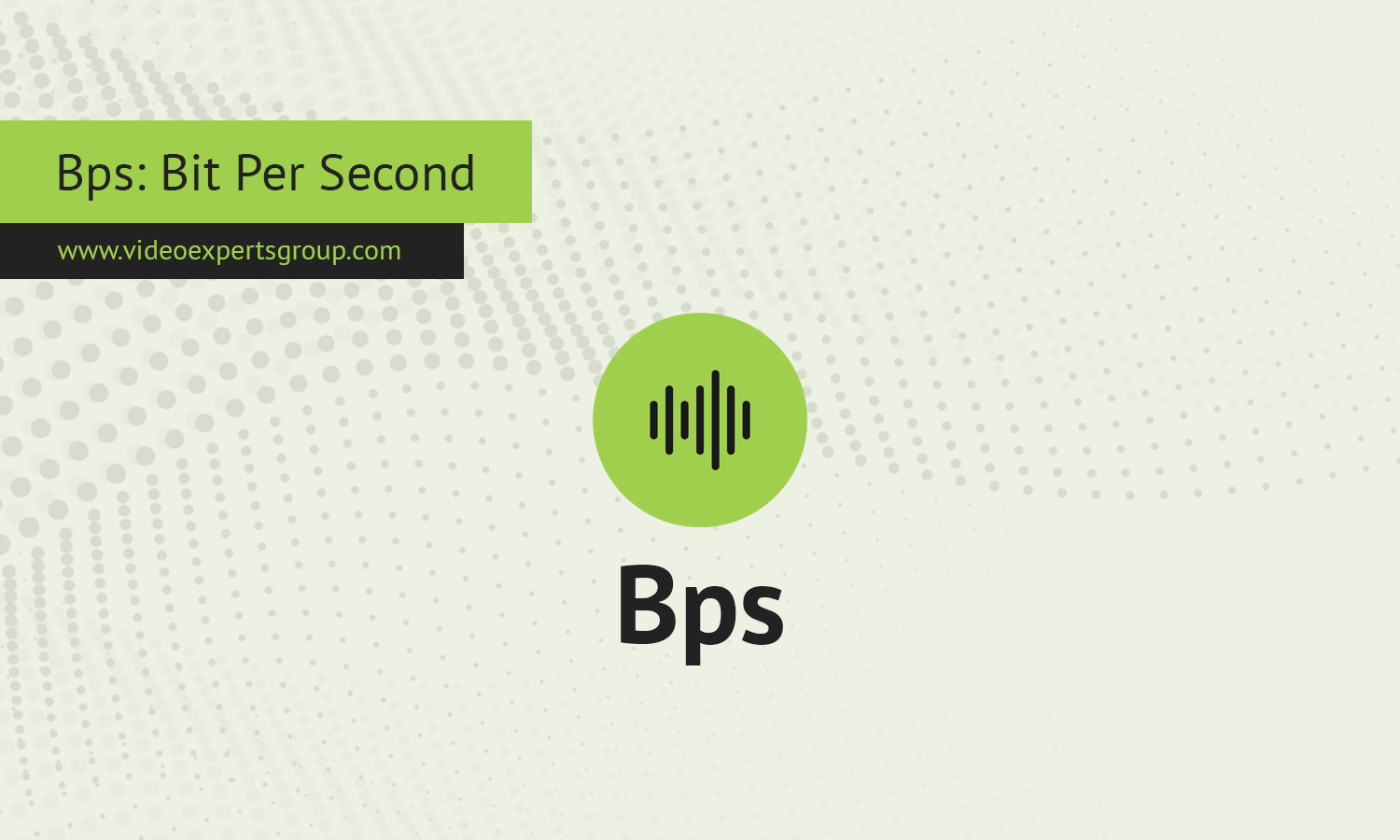Whether you're streaming a video, downloading a file, or sending an email, Bps gives a quantitative understanding of how fast the information is being transmitted across a network or system. This unit of measurement is essential in industries such as telecommunications, internet services, and networking, where data speeds directly impact performance and user experience.
Understanding what Bps means and its practical applications can help users better grasp how their internet or network speeds work. In this article, we’ll explore the meaning of Bps, as well as its advantages and disadvantages in different scenarios.
Meaning
Bps (Bit Per Second) is the standard unit for measuring data transfer speeds in digital systems. It represents the number of bits (binary digits, which are the smallest unit of data in a computer) transmitted or processed per second. This metric is typically used in describing internet bandwidth, network speeds, and the capacity of communication channels.
For example:
- A network speed of 100 Mbps (Megabits per second) means the system can transfer 100 million bits of data each second.
- A download speed of 1 Gbps (Gigabit per second) can move 1 billion bits of data per second.
Note: Bits (b) and Bytes (B) are not the same. One byte consists of 8 bits, so the terms kilobytes per second (KBps) and megabytes per second (MBps) are used to measure data in larger quantities, while kilobits per second (Kbps) and megabits per second (Mbps) are used to describe speeds.
Conversion Table
This table includes conversions from bits per second (bps) to tebibytes per second (TiBps), along with an additional column for bytes per second (Bps), making it easier to understand how these units relate to each other.
| Unit | Bit per second | Byte per second |
|---|---|---|
| 1 bit per second (bps) | 1 bps | 0.125 Bps |
| 1 kilobit per second (Kbps) | 1,000 bps | 125 Bps |
| 1 megabit per second (Mbps) | 1,000,000 bps | 125,000 Bps |
| 1 gigabit per second (Gbps) | 1,000,000,000 bps | 125,000,000 Bps |
| 1 terabit per second (Tbps) | 1,000,000,000,000 bps | 125,000,000,000 Bps |
| 1 petabit per second (Pbps) | 1,000,000,000,000,000 bps | 125,000,000,000,000 Bps |
| 1 exabit per second (Ebps) | 1,000,000,000,000,000,000 bps | 125,000,000,000,000,000 Bps |
| 1 byte per second (Bps) | 8 bps | 1 Bps |
| 1 kilobyte per second (KBps) | 8,000 bps | 1,000 Bps |
| 1 megabyte per second (MBps) | 8,000,000 bps | 1,000,000 Bps |
| 1 gigabyte per second (GBps) | 8,000,000,000 bps | 1,000,000,000 Bps |
| 1 terabyte per second (TBps) | 8,000,000,000,000 bps | 1,000,000,000,000 Bps |
| 1 kibibyte per second (KiBps) | 8,192 bps | 1,024 Bps |
| 1 mebibyte per second (MiBps) | 8,388,608 bps | 1,048,576 Bps |
| 1 gibibyte per second (GiBps) | 8,589,934,592 bps | 1,073,741,824 Bps |
| 1 tebibyte per second (TiBps) | 8,796,093,022,208 bps | 1,099,511,627,776 Bps |
Pros and Cons
Pros:
-
Precise Measurement: Bps provides an accurate measure of data transfer rates, which helps in evaluating the performance of networks, internet speeds, and storage devices. This precision allows businesses and individuals to monitor, assess, and optimize their systems effectively.
-
Scalability: From bits per second (bps) to gigabits per second (Gbps), Bps can be scaled to measure a wide range of data transfer rates, from simple low-speed connections to high-speed internet and network services.
-
Standardization: As a universally accepted unit, Bps simplifies communication across industries, ensuring consistency in describing data transfer rates. Whether it’s for home internet services or professional networking systems, everyone understands the metric.
-
Network Planning: Bps helps network engineers plan, manage, and allocate bandwidth to ensure that resources are used efficiently. For instance, higher Bps rates are necessary for tasks such as video conferencing or large file transfers.
Cons:
-
Confusion Between Bits and Bytes: Many users get confused between bits (b) and bytes (B). Since data storage is usually measured in bytes and data transfer in bits, this difference can lead to misunderstandings, especially when interpreting speeds (e.g., MBps vs Mbps).
-
Not Always User-Friendly: While useful for engineers, Bps measurements may not be intuitive for everyday users. Average consumers often care about download times or video quality rather than the exact number of bits transferred per second, which makes it harder to understand how Bps affects their experience.
-
Theoretical Speeds vs Real-World Performance: Bps measurements often refer to theoretical maximum speeds under ideal conditions. In real-world scenarios, factors like network congestion, interference, and hardware limitations can reduce the actual speeds, making it harder to achieve the advertised Bps.
-
Oversimplification: Relying solely on Bps for measuring performance can sometimes be misleading, as it doesn’t account for other factors such as latency, jitter, and packet loss, which also impact overall network performance.
Bps is a fundamental metric for measuring how quickly data can move between systems. From casual internet browsing to complex data networks, Bps offers a precise way to evaluate the speed of digital communication. While it provides a standardized and scalable measure, users must be aware of its limitations and potential confusion with similar units. By understanding both its strengths and weaknesses, businesses and individuals can make informed decisions about their network needs and performance expectations.
















